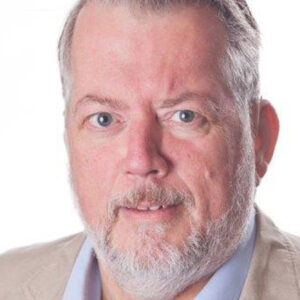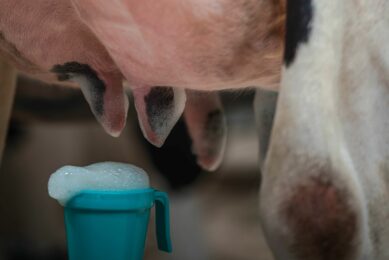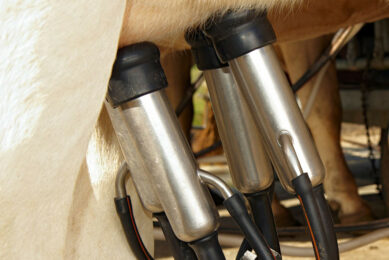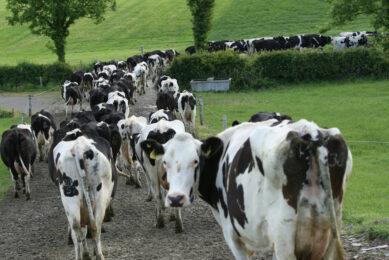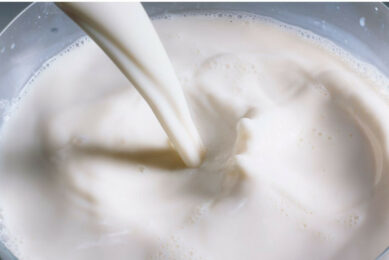Irish farmer sees growth in 3 locations
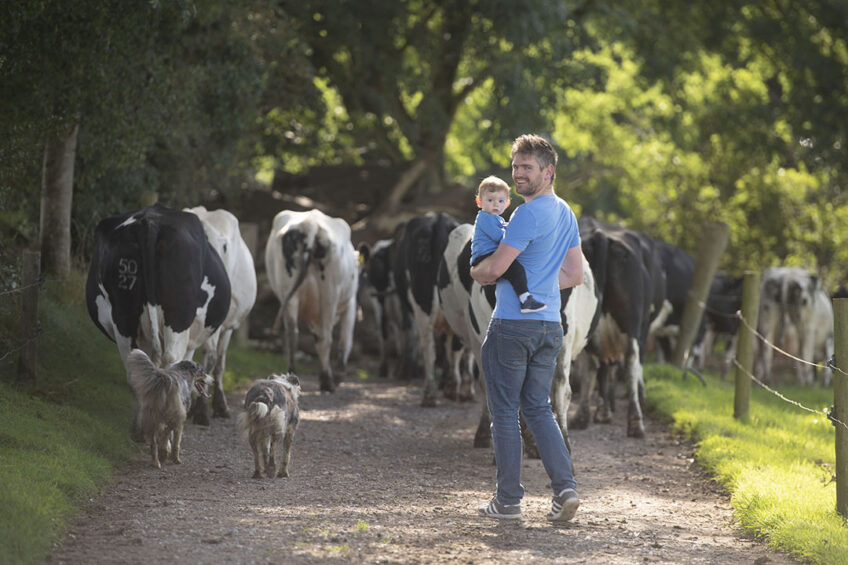
“I see a risk looming on the horizon: in the form of milk quotas in Ireland,” says Jerry Murphy, a dairy farmer based in Carrigadrohid, Ireland. Yet, he does not get any extra livestock or does not rush to feed more concentrates. Optimisation is still the number one focus on his farm, after the growth spurt of the last 6 years.
The farm expanded from 115 cows and 8 youngstock at 75 hectares in 2013 to its current 350 cows at 150 hectares. “We want an additional 25 self-bred cows in 2020. That takes us to 2,5 LU per hectare, which means we can produce 470 to 500 kg of milksolids per cow per year, fed with our own grass and few concentrates, a maximum of 600 kg per cow,” the young Irishman states.

It is immediately clear that Murphy used to be an accountant. He knows how to clearly formulate his goals and nearly every decision is accompanied with a financial consideration. “Becoming a farmer was not a financial consideration,” he states. “Farming is diverse, entrepreneurial, fun and it offers freedom and flexibility.”

Farm expansion
To take over the farm, which has been in the family for generations, it needed to be substantially expanded. In 2013, Jerry’s father milked about 115 cows at the 35 hectares of grassland surrounding the farm. This gave a stocking rate of 3.3 LU per ha on the milking platform. He rented a farm 3 kilometres away for the young stock, with a 10-year lease at 40 hectares. “The young stock would not finish all of our grass, so we transported silage to our home location for the 2-month dry period in December and January.” The lease was €550 per hectare in 2013. “Prices are increasing due to the substantial demand for suitable land for dairy cows. Leased land now goes at €700 per hectare.”

Making the leased location suitable for dairy cows and transferring all young stock to a breeder was the next step. All young stock now leaves the company after weaning at an age of about 12 weeks. The breeder feeds them at a cost of €1,20 per animal per day, which includes all required feeds, housing and care. It excludes any fertility actions. “We control that ourselves. It is too expensive when you do not get the animals gestating in time, especially when you work with seasonal production like we do.” The Murphys synchronise young stock with prostaglandin. “4 weeks into the insemination season, 90% of the replacements are pregnant. This means that 86% of all cows and heifers are calved in 6 weeks.”
The leased location was transformed into a dairy farm in 2014. The 2×12 swing over Dairymaster milking parlour is mounted on a portable frame. “The milking parlour will last longer than the time left in the lease. By using a portable milking parlour, we can take it with us if the lease is not extended.”

The dairy herd at both locations grew by its own breeding from 130 cows in 2014 to 160 in 2015 and 200 in 2016. “We had too little grass growth in March and September for our stock at 3.3 LU per ha, because the stocking was so high. We fed more concentrates and roughage in this period. This did not calculate well, as you have higher costs and poorer constituents. That is why we started leasing more land. We are back to a simple system now. Intensification just does not work in a grass-based system at the shoulders of the summer.”
3rd location
This resulted in the lease of another 70 hectares and a hired third location at 20 km. Over 120 dairy cows are milked here. All the young stock goes to the breeding company.
Jerry and his father both manage a location. The third location is run by a farm manager. Every location has a permanent employee and in case of emergency, all employees can help each other out. The location manager’s most important job is grassland management. Every manager does a weekly farm walk and plans grazing daily, based on the grass growth. The cows enter a plot that yields 1,400 kg of dry matter and they graze there 3 times until 3,5 centimeters of grass are left. They return to the plot some 20 days later. Plots where the grass has grown too much are mowed and the grass is baled for winter feed. In that decision, continuity of grazing is key.
“We both have a strong focus on profitable growth; we calculate everything”
The grass production is around 14 tons of dry matter per hectare per year now. “The heavy soil near our home location produces well, but the soil is more sensitive to drought the farther away you get.” The goal is to increase this grass production to 15 or 16 tons by overseeding and reseeding and by educating employees. “We can extract value from this grass growth by feeding 25 extra dairy cows.”

Farm finances and team
The total amount of financing now is around €2,000 per cow. That seems little, but interest levels in Ireland are high. Murphy pays 3,5% to 4% interest on his variable loan (monthly adjustable rate).
 Name: Jerry (32) and Susan (32) Murphy Name: Jerry (32) and Susan (32) MurphyPlace of residence: Carrigadrohid, Ireland Farm: 350 dairy cows at 3 locations on a total of 150 hectares Production is about 5.800 kg of milk with 4,25% fat and 3,70% protein, 475 kg of fat and protein per cow per year. Cows calve from 4 February onwards and are dried off around 1 December. |
Murphy sees the team he forms with his father as one of the strengths of his farm. “We both have a strong focus on profitable growth; we calculate everything. We learn a lot from the people in our study group, which is one of the best. If you surround yourself with the best, it always makes you improve.” He aims to increase efficiency, which is the focus in the coming years.

The farm’s weaknesses according to Murphy include: the dependence on land lease and the increasing lease prices, the dependence of non-family labour, increasing environmental laws and the relationships with family, employees and landowners. “If you treat everyone like you would like to be treated, it often works out. It is give and take and sometimes you need to be flexible. If you do not want to give an employee time off when he asks for it, you will in time run into problems.”


